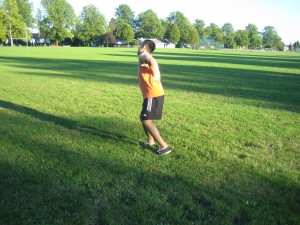A back spasm involves involuntary contraction or tensing of the muscles in the lower back. It ranges from infrequent and mild discomfort to severe pain which results to difficulty in movement.
Causes
- Lower back spasms can be caused by injuries to the ligaments, tendons and muscles found in the back or can be caused by some underlying conditions
- Heavy lifting
- Playing sports such as football and golf can cause spasms on the back due to the sudden back turns that are performed repeatedly.
- Weak abdominal muscles are susceptible to back muscle spasms
- Suffering from arthritis or a ruptured disk can put an individual at risk for back spasms
- A ruptured or bulging disk in the vertebrae puts pressure in the nerve and cause back pain.
Treatment

- Take plenty of rest at least 1-2 days.
- For severe back pain, take the prescribed muscle relaxants that work by relaxing the body.
- Wrap ice cubes using a towel or cloth and place in the painful area in the back to help lessen the inflammation and pain. If an ice pack is not available, a frozen bag of vegetables wrapped in a towel and placed on the affected area can be used. Apply the cold compress at least 20 minutes and then remove for 1 ½ and then reapply again for another 20 minutes. Repeat this procedure for the first 2-3 days after the back spasm begins.
- Take the prescribed non-steroidal anti-inflammatory drug (NSAID) such as ibuprofen, naproxen and aspirin to lessen the pain and inflammation.
- Avoid being immobile by taking a walk as much as possible, walking around and then followed by a short walk every half hour or extended walks during the day that can be tolerated. Long periods of inactivity will result to stiffening of the muscles that can make the condition worse. Walking is gentle on the back, increases the flow of blood in the area and promotes fast healing of the condition.
- Apply heat after 72 hours such as moist heat. Heat helps increase the circulation in the area and relaxes the nerves and muscle fibers. Taking hot showers or soaking in hot tubs also helps with the condition.
- Elevate the legs by placing a couple of pillows under the legs. Lie down on a stiff mattress or on the floor with the legs elevated or position a support or a chair and maintain a 90-degree bend on the knees. While sitting down, raise the lower legs into a footstool.
- Drink plenty of fluids to help prevent dehydration and loss of electrolytes that can lead to back spasms.
Seek medical help if the spasms at the back become severe and unbearable, happens frequently and the symptoms lasts more than two weeks.
